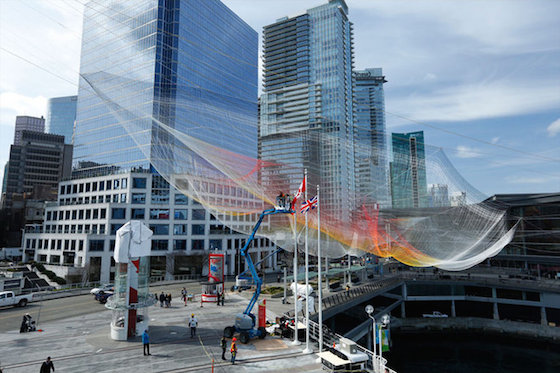Janet Echelman creates delicate, fluttering nets for the sky, aerial sculptures at the scale of skyscrapers.
This month (March 2014) on the occasion of the 30th TED Conference in Vancouver, though, she created her largest work to date.

During the day, the piece appeared more gauzy and fine, blending with the skies and clouds and capturing the subtle movements of the wind in its ripples and folds, at least in the video documentation created for the ephemeral piece, which was up for a week through March 22. It’s made from 145 miles of soft, braided fiber, a material that’s 15 times stronger than steel by weight.
The sculpture is effectively a distributed website, a single, full-screen Google Chrome window 10 million pixels wide, projected onto the overlapping, moving layers of net via five bright projectors. Users were given very fine control of what kind of mark-making they wanted to create and where it would appear on the sculpture via the Chrome-based app.
“When you look at the sculpture, you’re looking at a browser,” Koblin says in this video.
